I have been thinking non-stop about the great Yiddish writer Dovid Bergelson and his unforgettable short story “Two Murderers,” translated by the incredible Joachim Neugroschel. Among many other accomplishments, Neugroschel translated “The Nutcracker”. He also compiled eight stories Bergelson wrote in Berlin between 1922 and 1929—when many Yiddish writers came to the city to flee pogroms in Ukraine—and put them into a collection, with his own evocative title: “The Shadows of Berlin”.
The shadows Bergelson saw and wrote are especially haunting now.
“Two Murderers” is about a landlady who falls in love with her dog, Tell, who is also the most famous dog in all of Berlin. Or perhaps it is about Tell, who has fallen in love with the landlady, and about the new tenant, Zarembo, who has also fallen in love with his landlady, but can get nowhere, because all she can think about is Tell.
Here is the opening paragraph.From the beginning, there is something “almost human” about the dog:
And as if that’s not creepy enough, Bergelson’s second paragraph is about the mass fascination with Tell, the dog with the “beady, almost human eyes”. On rereading, I keep noticing how this second paragraph foreshadows so much in history, as well as how much Bergelson packs into a seven-and-a-half page story that is really a parable about an entire society.
It’s not just about murderers, but about murderer-loving crowds. This second paragraph plants two disturbing ideas in the reader’s mind—that murder can be excused because of who is doing the murdering, and that murder can bring “international renown and even more”. That “even more” haunts me.
Dog Over Man
Frau Guenther, the landlady, who is impossible to forget, uses the simplest of methods to display to her new tenant that the dog is supreme in her life; she challenges him to try and hold her hand in the dog’s presence.
“Well, let’s test it—we’ll touch hands….”
Bergelson makes it clear that the tenant would like a chance with his landlady. Watch how he emphasizes this with little details, from texture to sound. “The pockmarked man did it very slowly, very lazily, but pleasurably. He liked his soft, good-natured, two-hundred-pound landlady. Her curious rattling in German reminded him of how the Jewish women rattled in the small Ukrainian shtetls where he and his gang had plundered and massacred; Frau Guenther’s rattling made him homesick for his native village.”
The dog, Tell, growls and terrifies the tenant. That’s an understatement, but I’ll leave you the pleasure of discovering how Bergelson writes it, and how the dog takes over the page. Zarembo, the tenant, has no choice but to move his hand away.
The Shadows of Berlin
Though this story often feels timeless, it was born in a very particular historical moment. Bergelson was living in Berlin in the 1920s, and what he observes is both a cruelty and a widespread willingness to accept cruelty. The dog-over-human is the ultimate foreshadowing of what might come, with dogs terrorizing human prisoners at Auschwitz.
But Bergelson captures something else, something crucial in his depiction of the open acceptance of antisemitism; it’s the chatter in the background—”how the Jewish women rattled”.
The tenant is from Ukraine, where he participated in pogroms, in the slaughter of Jews. As the story continues, Zarembo the tenant has no problem sharing the gory and bloody details with the landlady, who is only interested in one detail—was there a trial?
She’s interested because her dog, Tell, killed her foster child—an eight-month-old baby, whose head he ripped off with his teeth in a fit of jealousy; he wanted all of the landlady’s attention to himself. And as readers might imagine, no—there is no trial for all the slaughterers of Jews in Ukraine.
As for Tell, no trial for him either.
The fact that “the baby was lying on the floor, dead, blood-stained, with his throat ripped apart” gets Tell several days at the police station, but that’s it. He is sent back to Frau Guenther. And then comes this line—brace yourself:
“The veterinarian had determined that Tell was a healthy dog, he wasn’t crazy.”
Remembering Recent Pogroms
Who is crazy and who is healthy? Sure, the powers that be decreed that Tell was normal, but Zarembo the tenant makes other associations. Bergelson’s use of the word “longing” appears seeral times throughout the story. Here, it’s at the beginning of the paragraph in which the tenant is absorbing that the dog in front of him has already killed a baby.
For Bergelson, the memory of pogroms—and the “shattered glass” and “Jewish entrails—was very fresh. During World War I, several hundred thousand Jews were slaughtered in pogroms “both within the tsarist empire and the Russian-occupied territories such as Gilicia,” Neugroschel writes in his helpful introduction.
I find that the actual number and scope of pogroms are rarely discussed, but Neugroschel makes sure to offer details. “Then, in the short period between the end of World War I and the start of the Soviet regime, Ukraine witnessed 2,000 pogroms in some 700 towns and townlets,” Neugroschel continues. Two thousand pogroms.
Bergelson knew about pogroms. But he could not have known that the mid-to-late 1920s were a brief breath etween those pogroms and the Holocaust.
And maybe all of us have been living in breaths we didn’t realize were breaths. As for Bergelson, during that breath, he was the Berlin correspondent for The Forward and the Moscow-based Emes, which means truth. (I admit that I was charmed to discover that both of us wrote for The Forward. ) Bergelson, who seemed to know so much about human nature, and what was rumbling beneath German society, tragically returned to the Soviet Union in 1934.
Bergelson’s Fateful Decision
Bergelson must have thought Russia, or really, the Soviet Union, was his best hope. By 1934, Hitler was in power. Bergelson seemed to be seeing clearly about Germany. And in the Soviet Union, Yiddish was one of the official languages of the Byelorussian Republic and Birobidjan. Maybe Bergelson imagined that Yiddish would flower in a new communist state.
But the Soviet Union was no haven for Jewish writers. Stalin executed Yiddish writers and intellectuals, including Bergelson. (I often think that Stalin had excellent literary taste.) But first, the Soviet government “closed down the Yiddish theaters, Yiddish publishing houses, and the entire Yiddish school system (which went as high as the equivalent of junior colleges),” as Neugroschel writes.
Bergelson was murdered on the “Night of the Murdered Poets” in August 12, 1952, in Lubyanka prison in Moscow. The thirteen Soviet Jews—all writers and intellectuals—had been tortured, beaten, and imprisoned for three years before being formally charged. When I lived in Jerusalem, I used to walk near a playground with a plaque for Yiddish writers murdered by Stalin, including Bergelson and Der Nister. Somehow, the placement near children playing made me feel these writers lived on.
The Interview That Never Happened
Neugroschel told me over the phone that he learned Yiddish to translate Yiddish literature. One of my enduring regrets in life is that I did not make it to Queens in time to meet Neugroschel in person; we had discussed an interview, but it never happened. He very much wanted me to come, he told me several times. He was not well, but would host me in his apartment in Queens. I can’t remember why I never managed to schedule it.
So I am condemned to read his comments from other interviews. I read this 2006 interview by Elizabeth P. Glixman in Eclectica and found this assessment of Bergelson: (https://www.eclectica.org/v10n1/glixman.html)
“He is a very fine writer,” Neugroschel said of Bergelson. “He sounds like a fusion of a cantor and Virginia Woolf. His writing is lyrical.” This is the kind of comment I remember from our phone conversations. A fusion of a cantor and Virginia Woolf.
You can see why I am sorry not to have met Neugroschel in person. He was the son of the Yiddish Galician poet Mendel Neugroschel, but the Neugroschels didn’t speak Yiddish at home because his mother didn’t like the idea. Joachim taught himself Yiddish later on, and edited and translated such anthologies as Yenne Velt: The Great Works of Jewish Fantasy and Occult (1976), The Shtetl (1979), and The Golem (2006). I remember that he told me that he learned Yiddish in order to translate Yiddish literature.
As a graduate student, he said, he became aware of the vast untranslated treasures of Yiddish writing.
Joachim Neugroschel. Photo from Broadway Publishing, where he translated “A Dybbuk”
“Neugroschel was born in Vienna on January 13, 1938, a few months prior to the Anchluss,” according to PEN America’s obituary. “The Neugroschel family immigrated to Rio de Janeiro in 1939 and to New York in 1941. Joachim Neugroschel graduated from Columbia University in 1958 with a degree in English and Comparative Literature. In a career that spanned four decades, Neugroschel translated more than 200 books from Yiddish, French, German, Russian, and Italian. Not only was he a translator of fiction, poetry, memoirs and biographies.”
I think that says some of it but not all of it; what was really exciting about Neugroschel as a translator was how he shaped books—or sort of made them, anew, from shorter pieces that he found. Take The Shadows of Berlin. Bergelson didn’t put it together; Neugroschel did. “The idea of The Shadows of Berlin as a short story collection was mine,” Neugroschel told that same interviewer. The “selection was based on marketing. It is much easier publishing stories with a "come hither" title.”
Why Isn’t Dovid Bergelson More Famous?
It’s reasonable to ask why Dovid Bergelson isn’t better known, or why he isn’t a household name. Most readers—at least most Jewish readers—have heard of Sholom Aleichem, especially now with the revival and smashing success of Fiddler on the Roof in Yiddish, but the name “Dovid Bergelson” sometimes draws blank stares.
“Yiddish literature can be seen as a three-legged stool: hard, homey and supported by its ‘three grandfathers,’ ” J. Hoberman wrote in The Nation in his memorable review of The Shadows of Berlin.
“There is the corrosive anticlerical satirist who called himself Mendele Mokher Sforim (Mendele the Book Seller); the self-invented, deceptively artless and universally beloved folk author Sholem Aleichem; and the Warsaw writer of Hasidic allegories I.L. Peretz. But there was once a fourth, or rather the promise of a fourth: Dovid Bergelson (1884-1952).”
Dovid Bergelson with his son, Lev.
“Unlike the grandfathers, Bergelson did not write for a popular audience so much as a cultivated Yiddish-speaking elite–at least at first. And, no less than his readers, Bergelson was a complex amalgam of the provincial and the cosmopolitan,” Hoberman continues, before offering some biographical details.
“Born to a prosperous Hasidic family in a Ukrainian shtetl, he attended a traditional religious school but received a secular European education from a tutor. His parents died when he was a boy. From the age of 14 he was raised in the households of elder brothers who had left their small town for the booming, increasingly Jewish cities of Kiev, Odessa and Warsaw.”
Like other Jewish writers of his time, Bergelson first tried Hebrew and Russian, and then switched to Yiddish. And as Neugroschel writes in his introduction to The Shadows of Berlin, Bergelson was unusual because of his complex women characters—like the landlady with the murdering dog.
Here is my favorite Neugroschel quote from the Eclectica interview: “Normally a publisher has a stable of authors. I feel an author should have a stable of publishers.”
And so it is my pleasure to share that it has been lovely hearing from so many readers—who, through Substack, are also publishers, because they make things possible. This winter I will host salons as my thank you to the subscribers who have supported this newsletter. More soon, and hope to see you there!
***********************************************************************************************************
Hope you enjoyed this newsletter! Thank you for your support of writing with depth.




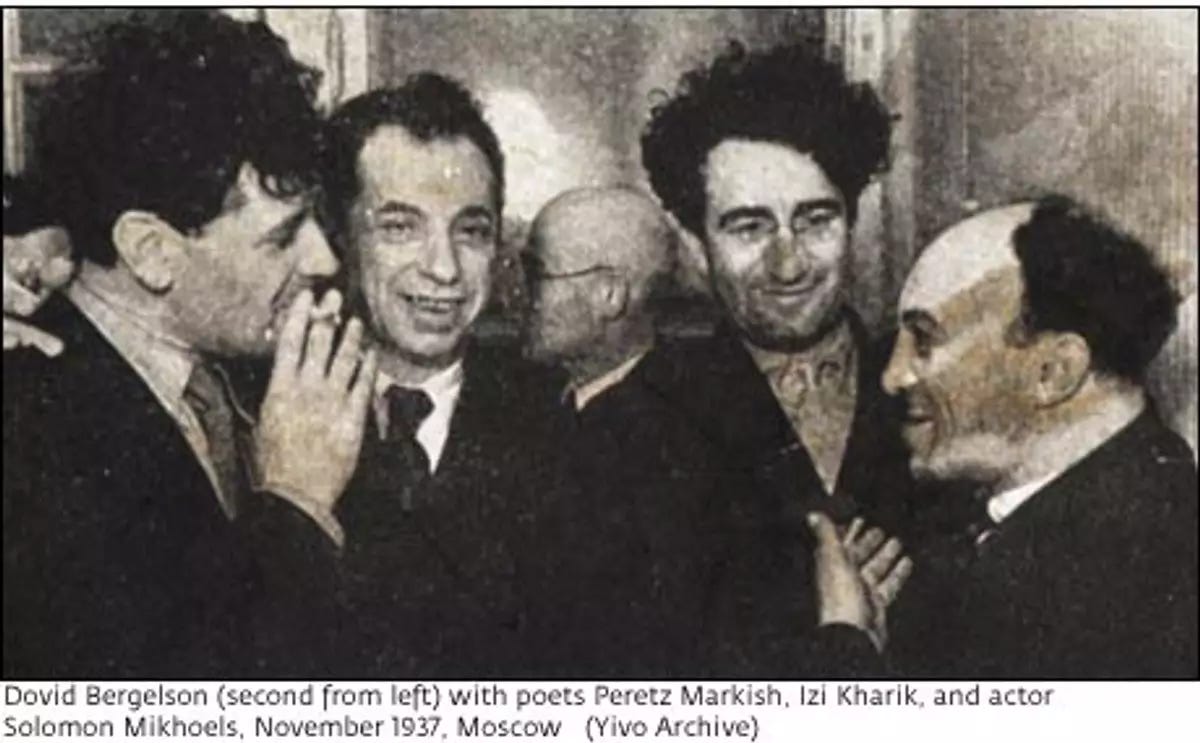

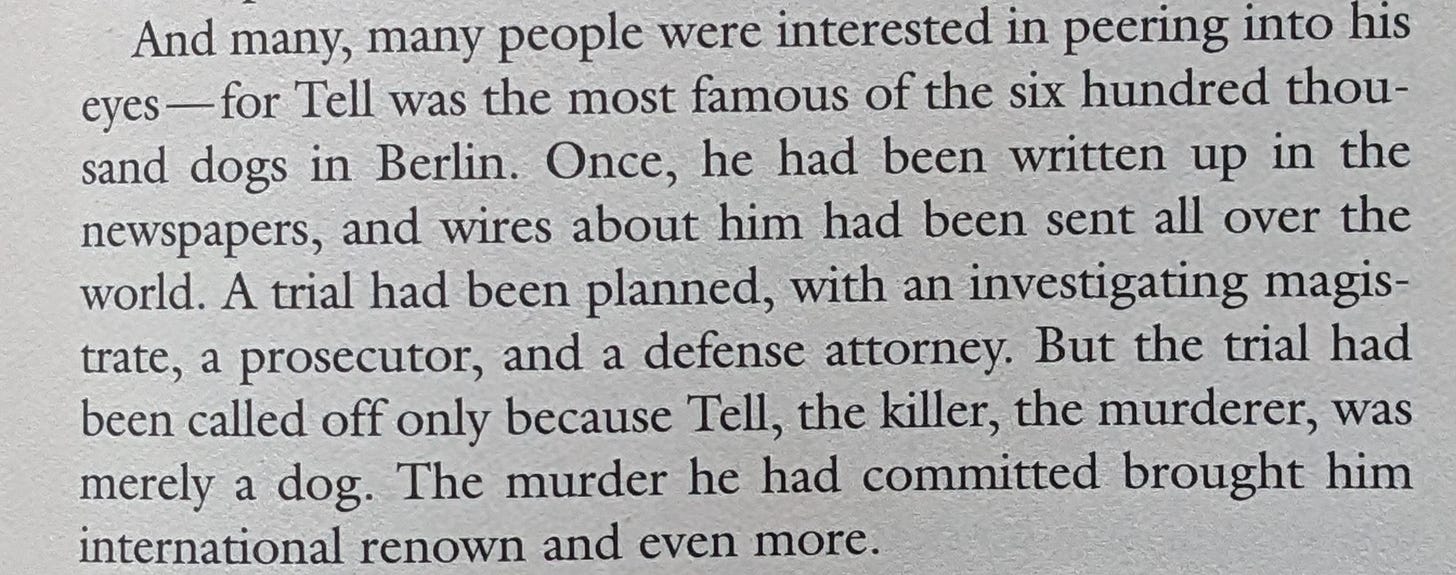
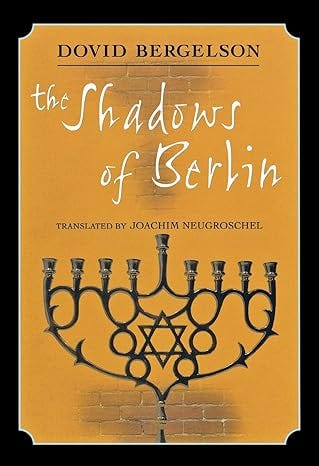
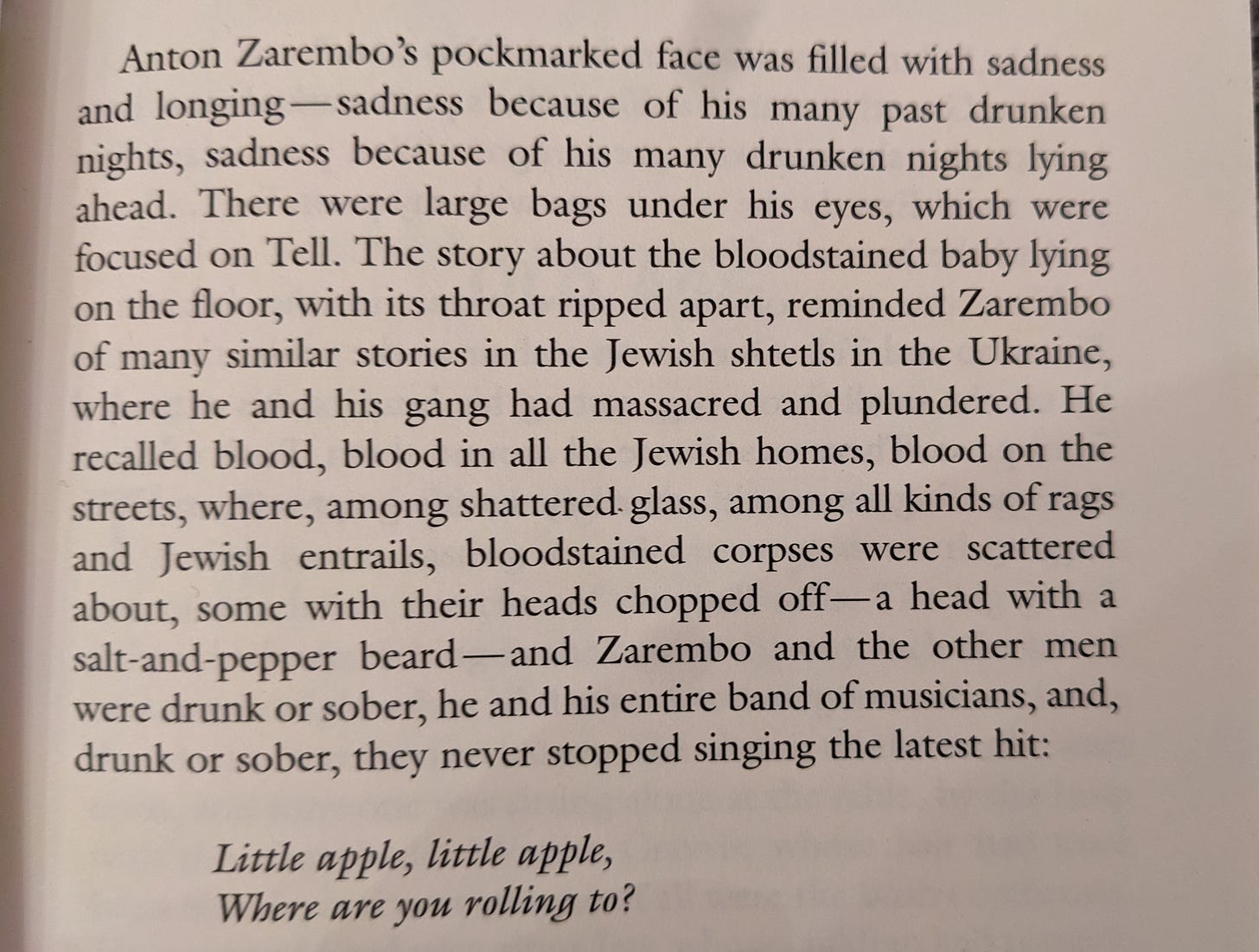
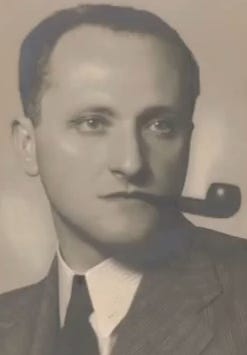
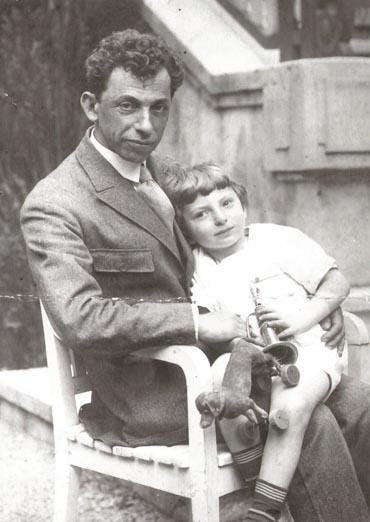
"And maybe all of us have been living in breaths we didn’t realize were breaths." I was born in 1937. War has been continuous. That is its aim. Christmas Eve 2023, wars in 52 countries, not counting the fictions, War on Drugs, Poverty, etc. Thank you for this intro to many unknowns. ever S Again